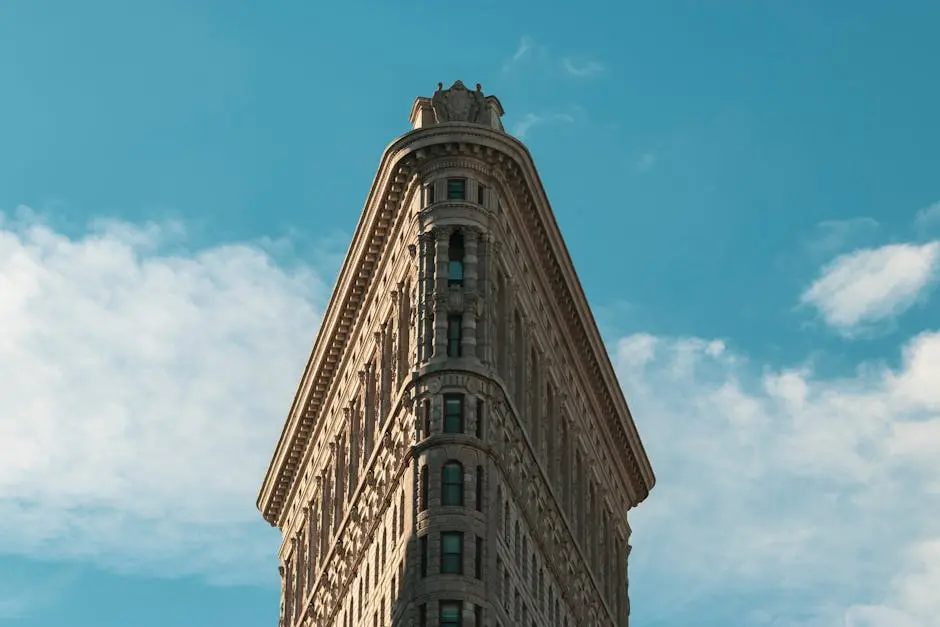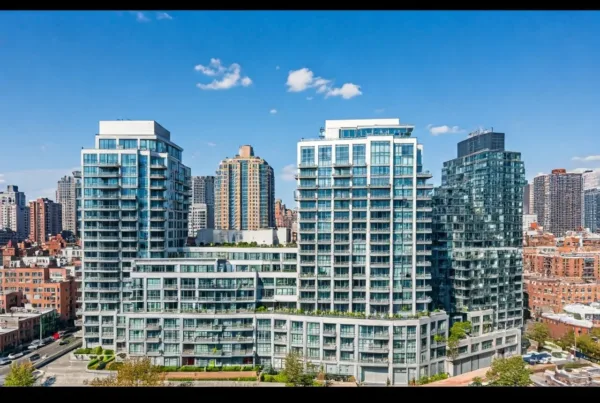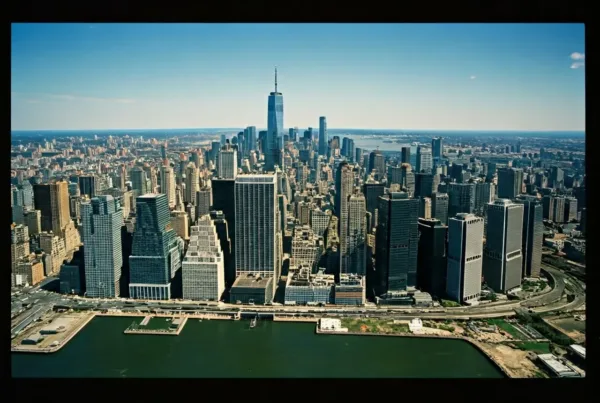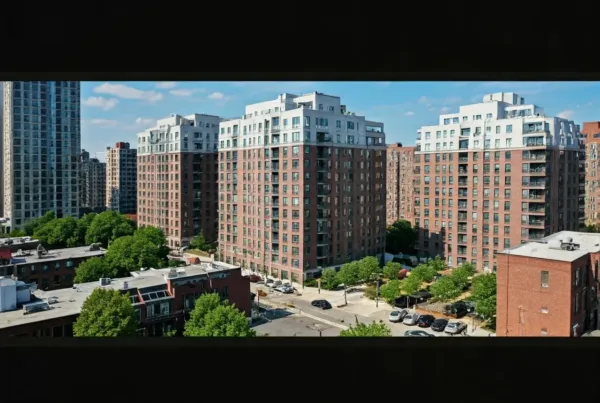In the midst of New York City’s ever-evolving skyline, few buildings have captured the fascination of both residents and tourists like the iconic Flatiron Building. With its unique triangular design and prominent location, the Flatiron has redefined architecture in the bustling city. This blog explores the history, design, and legacy of this beloved landmark.

The Historical Significance of the Flatiron Building
Completed in 1902, the Flatiron Building was one of the tallest buildings in New York City. Its construction marked a significant moment in the city’s development, showcasing the rapid growth and architectural ambition of the early 20th century. Known initially as the Fuller Building, it stood as a testament to the prosperity fostered by the industrial boom. This iconic structure is synonymous with New York’s burgeoning creativity, and its design became a cornerstone of architectural novelty in the city. Standing at the nexus of Fifth Avenue and Broadway, the building captured the attention of locals and newcomers, highlighting a transformative era where function met form in an unprecedented manner.
The unique plot on which the Flatiron sits was the former site of the St. Germain Hotel. Its transformation into this landmark represents New York’s adaptability. The change reflects the city’s readiness to embrace modernity and move forward. The choice to build on this land echoes decisions faced by urban planners today, balancing historical significance with contemporary needs. The building’s completion not only marked a shift towards modern architectural designs but also influenced the surrounding neighborhoods, contributing to the vibrancy of nearby districts like the Flatiron District.
From the day it was constructed, the Flatiron Building quickly became a darling of photographers and artists. Its charming silhouette has etched itself into the collective memory thanks to celebrated works by Alfred Stieglitz and Edward Steichen. These artistic endeavors catapulted the building from a real estate venture to an emblem of New York’s artistic heritage. The Flatiron’s integration into visual media contributed to its role as a cultural symbol, allowing it to transcend its architectural identity and establish a permanent place in New York’s cultural landscape.
An Architectural Marvel: The Unique Design
Designed by architect Daniel Burnham, the Flatiron’s distinctive triangular shape was not only visually striking but also an innovative solution to fitting into the irregular plot of land where Broadway and Fifth Avenue intersect. Its Beaux-Arts facade is a harmonious blend of French and Italian Renaissance influences, lending a sense of grandeur to its otherwise sleek design. The building’s tall, narrow form, often described as a “flatiron,” evokes the essential functionality and elegance of an artist’s canvas.
Burnham utilized a new steel frame construction technique which allowed the Flatiron Building to rise 285 feet into the sky, making the most of every inch of its triangular lot. This structural innovation paved the way for the future of skyscraper engineering, allowing architects to defy previously held limitations of building height and form. The pattern set by the Flatiron can be seen in countless other New York buildings that came after, each pushing the boundaries of what was architecturally possible. As a direct result of this approach, New York has become a gallery of vertical art, with each building cradleing ambition and architectural creativity.
The exterior design is not merely aesthetic; it captures the prevailing architectural philosophies of the time. With its terracotta and limestone detailing, the building presents an elegant verticality that celebrates its engineering acumen. The use of glazed terracotta tiles not only enhances its beauty but also serves practical purposes, such as protecting against weathering and aging, ensuring the building has remained visually stunning for over a century. The uniqueness of this style contributed not only to creating a memorable visual identity for the Flatiron but also set a precedent for architects worldwide seeking to blend artistry with modern engineering.
Engineering Challenges and Triumphs
Constructing the Flatiron Building was no easy feat, given the challenges posed by its unique structure and the technological limitations of the time. Engineers implemented groundbreaking techniques to ensure the building’s stability and durability. One of the most demanding aspects was devising a structure that could withstand the strong winds prevalent at the building’s pointed prow, a challenge that epitomized the ingenuity of structural engineering firms of the era.
The foundation extends a remarkable 35 feet below ground to rest securely on solid bedrock, an innovative solution that provided the necessary anchor for this slender giant. The interior steel skeleton, reinforced by terracotta arches between the horizontal girders, enabled open floor plans—an architectural triumph of the day. This approach not only ensured the building’s endurance against natural forces but also addressed urban space utilization challenges in a burgeoning metropolis. Such pioneering methods have informed modern project planning, allowing for skyscrapers to be erected safely in various environmental conditions around the globe.
Beyond mere engineering, the project was an exercise in logistical precision. Construction crews faced the persistent issue of accommodating street-level commerce and public transit, proving the building as not just an architectural icon but a case study in urban project management. Parallels can be drawn between this historical project and contemporary developments we see today in Manhattan’s prime real estate sector, which also grapples with similar challenges of optimizing space and maintaining accessibility.
Cultural Impact and Popularity
Beyond its architectural significance, the Flatiron Building quickly became a cultural icon, appearing in countless photographs and serving as a symbol of New York City’s innovative spirit. Its allure remains strong today, drawing visitors from around the world. The initial mixed reception the building received only served to amplify its mystique. Over time, it became a beacon for the art and photography movements burgeoning in the city.
The building has appeared in various forms of media, from classic films to contemporary television shows, underpinning its deeply-rooted association with New York. This exposure has been instrumental in promoting tourism, as visitors flock to capture their own images with the triangular wonder, often stopping on their way to other notable landmarks in Brooklyn and Manhattan, enriched by the presence of such architectural masterpieces. This cross-pollination of cultural attractions fortifies New York’s claim as one of the world’s preeminent destinations for architectural tourism.
The Flatiron Building’s location adds a layer of vitality to its cultural impact. Situated in the bustling Flatiron District, the building is at the heart of a neighborhood known for its unique fusion of old-world charm and modern vibrancy. The district has evolved into a hub that blends retail, dining, and tech companies, becoming a microcosm of New York City’s dynamic economy. The building’s presence commands a perpetual reminder of the city’s historical roots and continuously thrives amid waves of modern redevelopment.
Influence on Modern Architecture
The Flatiron’s bold design has inspired modern architects to push the boundaries of traditional architecture. Its legacy lives on in contemporary buildings that challenge and redefine urban landscapes. The Flatiron’s triangular form has served as a model for inventive construction solutions, influencing buildings in cities as diverse as Buenos Aires and San Francisco, each taking a page from the Flatiron’s playbook to overcome design constraints and maximize urban real estate usage.
Contemporary architectural trends owe much to the Flatiron’s blend of aesthetic appeal and practical design. Its influence is visible in the geometric forms of modern skyscrapers and the embracement of non-conventional plots, initiatives more significant than ever as urban centers seek to combat increasingly limited space with creativity. Across NYC’s newest developments, you can trace elements of its pioneering spirit in their use of complex geometries and innovative material applications.
The daring design decisions made when constructing the Flatiron paved the way for architects who desired to blend functionality with flavor. Today, urban environments benefit from dynamic and adaptive uses of space, much like how the Flatiron’s frame anticipated more open, versatile interiors. As we strive towards sustainability, the Flatiron remains a source of inspiration, exemplifying what can be achieved when aesthetics and engineering converge—a lesson for any ambitious project undertaken within both Manhattan and across the globe.
A Legacy of Innovation
The Flatiron Building not only changed the landscape of New York City but also influenced architectural trends worldwide. Its daring design broke away from traditional styles and paved the way for future innovations. Today, the Flatiron stands as a testament to the power of architectural creativity and continues to inspire generations.
Work with the Real Estate Rebate Team
Real Estate Rebates Team is a top real estate brokerage firm in NYC and NJ, dedicated to delivering exceptional service and significant savings. Offering up to a 2.5% commission rebate at closing, we pass these savings directly to clients buying or selling homes. Through education and a transparent rebate system, we empower clients to maximize their benefits, with numerous success stories proving our approach. Our online platform allows you to easily calculate potential rebates and find properties that suit your needs. We negotiate the best prices and secure additional incentives at closing, ensuring you get money back whether selling, renting, or buying a condo, co-op, or townhouse. For new developments, we offer even higher rebates on larger commissions. Real Estate Rebates Team helps clients enjoy greater savings and better returns on their real estate transactions.





